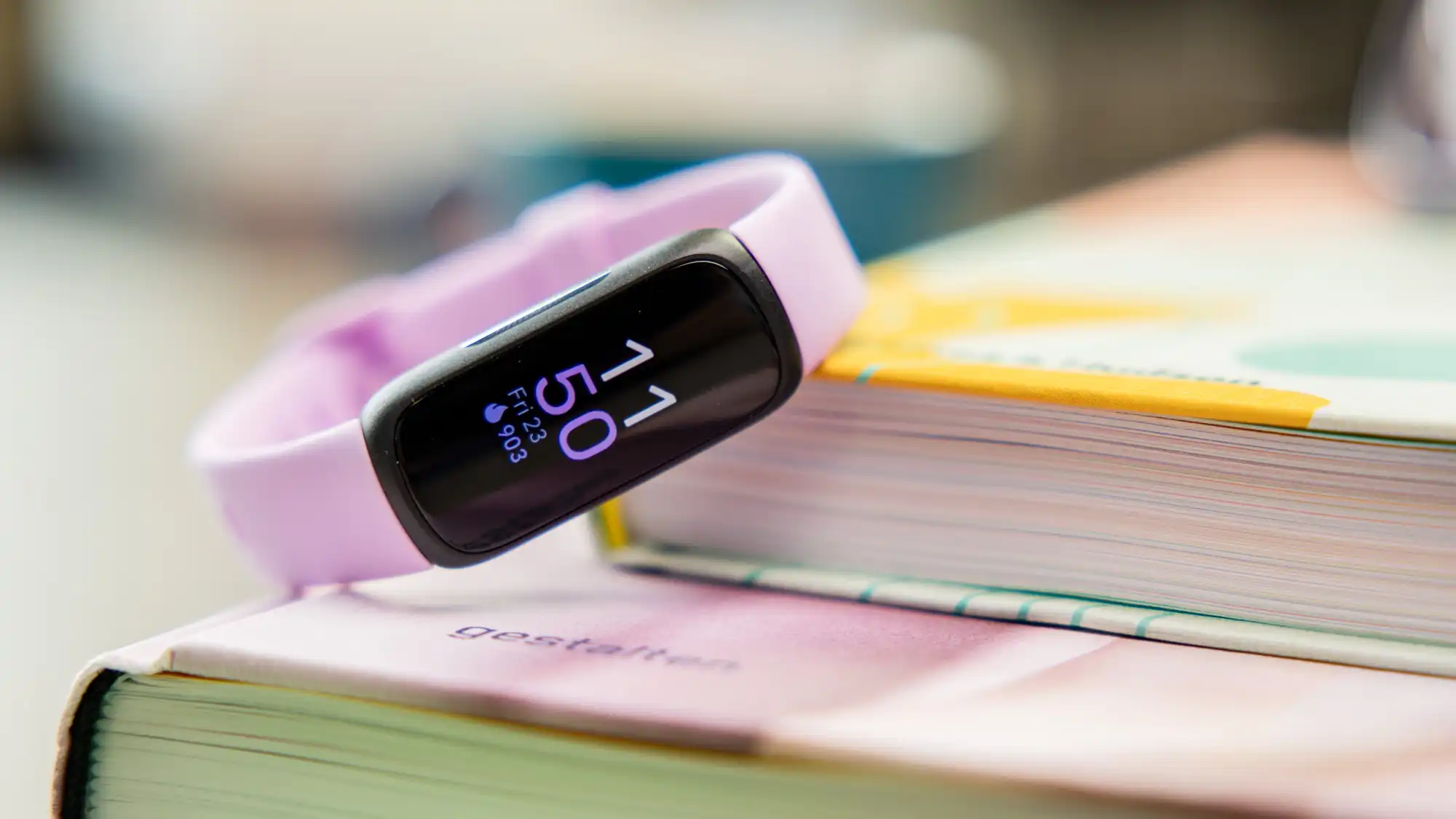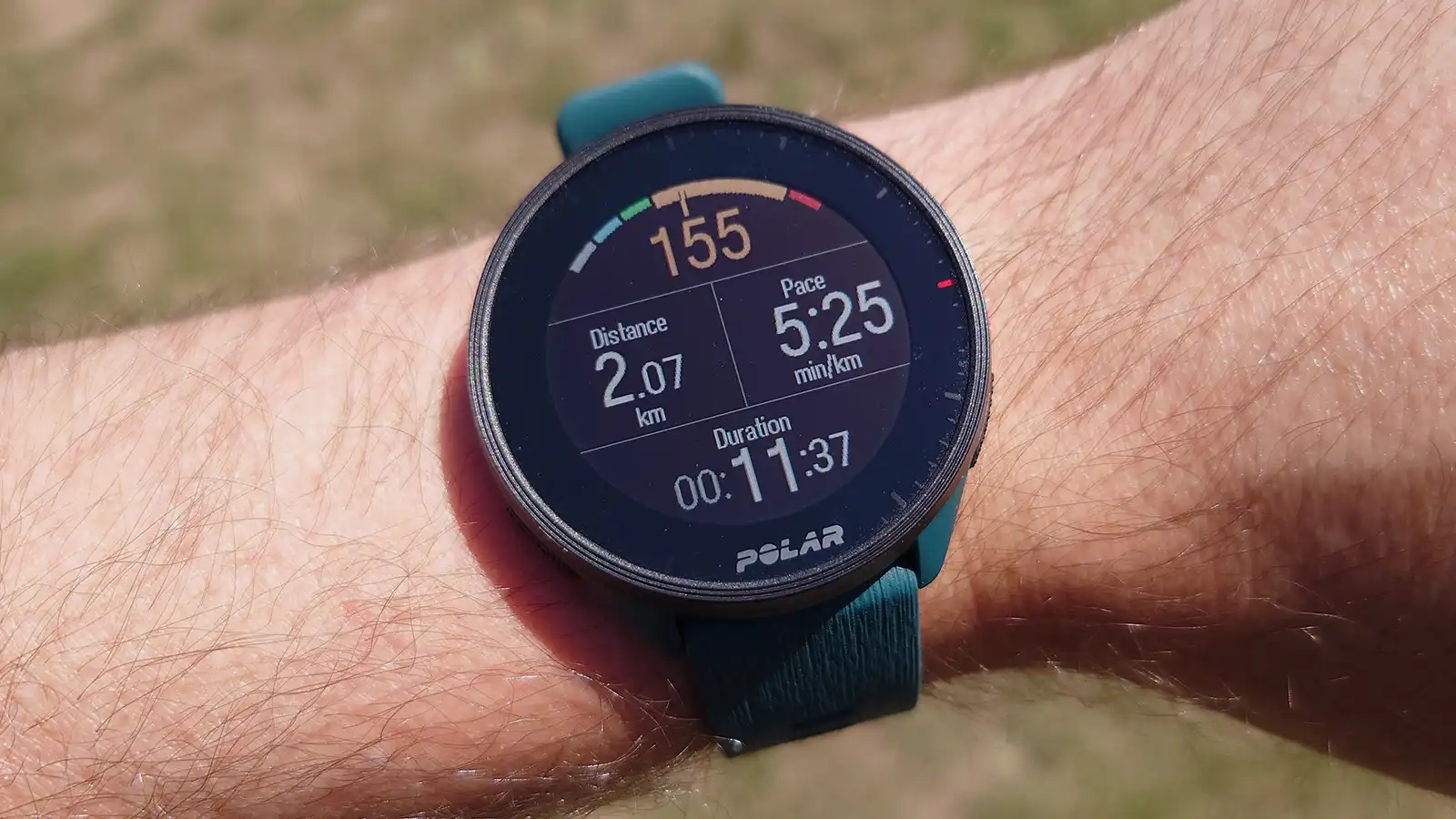Most people’s initial response when asked to name a sort of wearable technology is a smartwatch.
It’s simple to understand why: smartwatches are very powerful gadgets that combine health tracking with access to a wide range of phone capabilities and specialized apps.
But do you really need all of that on your wrist? Could you save money by going with something simpler?
If you answered ‘yes’ to either of those questions, a fitness tracker is the appropriate solution for you. They provide the same basic health tracking as a smartwatch, such as steps, heart rate, and workout data. In many situations, you’ll also obtain information about your sleep, stress, and blood oxygen levels.
And there are two major reasons to prefer a fitness tracker over a full-fledged smartwatch. The first consideration is cost, with numerous activity trackers selling for a fraction of the price. Then there’s battery life, with smaller displays often lasting far longer on a single charge.
However, there are several fitness trackers to select from in 2023. Fitbit is the obvious brand, which is currently owned by Google yet remains the market leader. However, there are other choices, ranging from low-cost bands to high-end hybrid watches and even a wearable with no display.
In this post, we’ll look at the top ten fitness trackers available right now, each of which has been tested and ranked. You’ll also find thorough buying tips at the bottom of the page to help you determine what’s best for you.
Best fitness trackers 2023
1. Xiaomi Mi Band 7 – Best fitness tracker

The Xiaomi Mi Band 7 is a fantastic fitness tracker that combines a low price tag with an outstanding array of sensors to measure your health, fitness, and exercises.
The huge always-on display is a particularly good feature, helping to showcase the vibrant watch faces on offer while making text simpler to read at a glance, albeit the always-on technology comes at a high cost to overall battery life.
All-day SpO2 monitoring, new workout metrics (including VO2 Max), and the capacity to track more sessions than ever before are all part of fitness tracking.
Although the lack of built-in GPS may irritate fitness enthusiasts, this is a terrific small affordable tracker for keeping track of your overall health and fitness.
However, you may prefer the follow-up Band 8, which has a slightly bigger display and new design which allows it to be worn as a necklace or on your shoe.
2. Fitbit Charge 6 – Best Fitbit

The Charge 6 improves on what made the Charge 5 so successful.
Fitbit’s biggest improvement this time is access to Google Maps, Google Pay, and YouTube Music (no other music streaming services are accessible), bringing it closer to a smartwatch than ever before.
However, its major focus remains fitness, with support for over 40 programs (some of which are automated) and your sleep. Steps, distance, calories burnt, hourly activity, and heart rate are all tracked in the data collected.
The color display is stunning, and the gadget is simple to use with a combination of touch and the new side button. It’s also nice to have built-in GPS, even if it can be flaky at times.
There is still no altimeter, so you cannot count floors climbed, and many sophisticated functions are only available to Fitbit Premium customers. However, even if you do not pay, the Charge 6 provides an excellent all-around fitness tracking experience.
3. Withings ScanWatch Light – Best hybrid

The ScanWatch 2 (shown below) from Withings is the most complete hybrid currently available, but the Light delivers all most consumers want at a lower price.
This features a stunning premium design that is both lightweight and extremely sturdy. It has a small 0.63-inch monochrome display that can be controlled using the revolving physical crown.
There is adequate space to display all important information except phone alerts, which are frequently cut off. Though data is normally confined to heart rate (including zones), steps, distance, and speed, the ScanWatch Light can monitor over 40 exercises (some automatically).
However, sleep tracking is effective, and battery life is absolutely exceptional. You won’t be able to attain the 30 days that Withings promises, but 1-2 weeks is certainly within reach.
The ScanWatch Light is the Withings watch to purchase if you don’t need 24/7 temperature tracking, ECGs, abnormal heart rhythm alarms, or blood oxygen monitoring.
4. Fitbit Inspire 3 – Cheapest Fitbit

The Fitbit Inspire 3 is the most affordable model in the current lineup, making it a good beginning point into monitoring.
It’s still more costly than competitors like the Xiaomi Mi Band 7, but Fitbit’s software experience and ecosystem are both good, so for some, it may be worth spending a little more – but paying more for a smaller display does hurt.
It also helps that you get up to 10 days of battery life (albeit a bit less if you activate the new always-on display option), 24/7 heart rate monitoring that is now supplemented by SpO2 data, and sleep tracking. Just keep in mind that there is no built-in GPS functionality, and that you will need to subscribe to the premium Fitbit Premium plan, as with other Fitbits.
5. Amazfit Band 7 – Best on a budget

The Amazfit Band 7 gives an excellent first impression with its beautiful appearance, durable construction, large display, long battery life, and solid workout monitoring.
The software might need some polish, and a home button would make things simpler, but it is more than enough for the price.
The Amazfit Band 7 should be toward the top of your list if you’re seeking for a decent value smart band today.
6. Withings ScanWatch 2 – Best health tracking

The majority of what we wrote about the ScanWatch Light above applies to the ScanWatch 2, with a few exceptions.
The addition of clinically certified ECGs is the most significant, and it is rather amazing. Blood oxygen and abnormal heart rate alarms aren’t necessary on a hybrid watch, but they’re pleasant to have. Though the main 24/7 temperature tracking requires a lot of data to be helpful, it does not feel essential.
It’s a shame that this more expensive watch still lacks built-in GPS and that heart rate tracking is inconsistent. However, while workout data is limited, the ScanWatch 2 delivers an amazingly complete overview of your health without losing an appealing, long-lasting design.
If you don’t mind the premium price tag, it’s definitely worth considering.
7. Polar Pacer – Best for runners

The Polar Pacer is a running watch that lasts many days on a single charge, seamlessly monitors your workouts, throws out meaningful statistics, and doesn’t bother you with alerts.
The Pacer supports a number of activity kinds, but the emphasis is on running, with GPS tracking and a post-workout ‘running index’ to show how you fared across a variety of parameters.
If you’re looking to start into jogging, or if you’re already out on the trails, the Pacer will be a fantastic addition to your equipment, with a long battery life, a beautifully legible display, lightweight build, and the intelligence to show you how you’re doing and help you improve.
8. Garmin Vivomove Trend – Wireless charging hybrid

The Garmin Vivomove Trend is a smartwatch hybrid that, like the Withings ScanWatch, combines analogue and digital design features with basic smartwatch capabilities.
If you’re primarily concerned about steps, sleep, monitoring your heart rate 24/7, and being driven to exercise more each day, the Trend shines. It can do more, but its capabilities as a hybrid smartwatch lie in this area.
It also impresses with wireless charging using the popular Qi standard, which means you can charge it with practically any wireless charger – a degree of ease few other trackers can match.
Crucially, it delivers those features with an analogue look that rarely feels like it’s getting in the way of that digital display behind it showing off your stats and notifications.
9. Fitbit Ace 3 – Best for kids

The Fitbit Ace 3 is designed to accommodate children’s active lifestyles, giving both children and parents with simple yet informative activity and sleep tracking data.
The Ace 3 is designed to encourage youngsters to be more active, but it might also incentivize the entire family to get healthier together (assuming everyone involved has their own Fitbit to wear).
Older youngsters may wish to opt for a tracker with a little more punch, as the Ace 3 has fewer fitness and notification capabilities than Fitbit’s ‘adult’ trackers. It counts steps, registers Active Minutes, and monitors basic sleep patterns, but it does not measure heart rate.
10. Whoop 4.0 – Best for cutting screentime

The Whoop 4.0 is a little different: there is no display and no step count monitoring, so it is not a standard fitness tracker. Instead, it’s a basic tracker that you can slide into a watch-like bracelet or strap onto workout apparel, and it’s designed to assess your strain and recuperation, telling you how hard you pushed your body and when to rest.
There’s also sleep monitoring and run recording, however you’ll need to bring your phone with you because there’s no GPS. The Whoop is also excellent for individuals who focus on cardio, as it does not always identify strain effectively in activities that do not raise your heart rate, such as strength training.
The main drawbacks are that you don’t get basic monitoring capabilities that you may expect elsewhere – such a step count – and that the payment structure is unique. The Whoop tracker is free if you sign up for a subscription, which costs £18/$20 per month if you commit to two years in advance.
Some people will be turned off by paying so much to check out a rather simple fitness tracker, but if you want a tracker that concentrates on cardiac statistics and makes you more aware of strain and sleep, it’s an excellent choice.
Buying advice for the best fitness trackers
What is a fitness tracker?
Fitness trackers let you to measure and report a wide range of activities throughout the day, from a basic step count to weight training sessions, swimming, and more. Advanced models can track sleep, identify stress, and even monitor particular health conditions.
Some users will want something that counts steps and doesn’t need to be charged frequently, while others may be looking for a new marathon partner.
Do you want to be able to log your journeys using inbuilt GPS, or would tethered GPS (drawing real-time position data from your phone) suffice? Do you require continuous heart-rate monitoring? Is it necessary for your tracker to be water-resistant? Is connectivity with other fitness services, such as Strava, required? These are all extra factors to consider before making a purchase.
What’s the difference between fitness trackers and smartwatches?
There’s no strict line here. But, broadly speaking, we define a smartwatch as a more advanced wearable with additional apps and functionality.
You should expect a smartwatch to allow you to install and run apps – including some of the ones you’d find on your phone – as well as check notifications, reply to messages, and perhaps even take calls. Some smartwatches even support eSIM for their own independent data connection.
Should I just buy a Fitbit?
While Fitbit products are undeniably competent, there are plenty alternative trackers available that excel in areas where your ordinary Fitbit does not.
More significantly, many of Fitbit’s competitors offer comparable specs at considerably cheaper pricing, so you’ll be paying a bit more for the Fitbit brand and software if you opt for it. However, Fitbits are dependable, offer excellent connectivity with other services, and if you’re already familiar with their software and experience, you may bypass the learning curve of new hardware.

